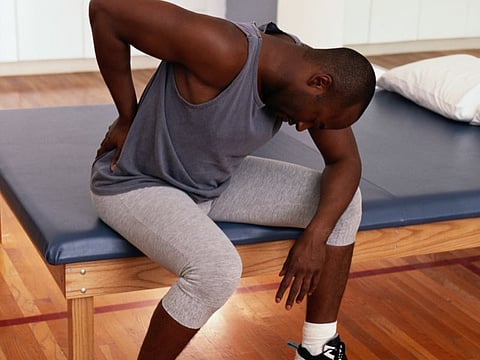FRIDAY, Dec. 4, 2015 (HealthDay News) -- Electrical nerve stimulation may offer some relief for older adults with chronic back pain, a new study suggests.
While wearing and activating the "transcutaneous electrical nerve stimulation" (TENS) device, people had significant improvement in pain when resting, according to the researchers. The study participants also had a reduction in pain while moving, along with improvement in physical functioning, the researchers said.
"TENS is not a new treatment. It's been around 50 years or more," said lead researcher Corey Simon, a postdoctoral researcher, in the University of Florida's Pain Research and Intervention Center in Gainesville.
The TENS unit is a small battery-powered machine that delivers low-volt electrical current through electrodes placed on the skin.
TENS can be used to treat acute pain, including pain with childbirth, or chronic pain, such as osteoarthritis, according to Simon. TENS most likely works by activating the same receptors in the brain and spinal cord that are targeted by pain-relieving drugs, he added.
TENS only works when the unit is turned on. Pain relief can last for a little while after the device is turned off, but like medications, its benefit quickly wears off, he explained.
"TENS is a safe, conservative treatment," Simon said. "It's inexpensive and may be comparable to drug treatment," he added.
For the study, Simon's team studied the effectiveness of TENS on 60 adults with lower back pain ranging in age from 18 to 79. Participants received four 20-minute sessions of TENS therapy over two to three weeks.
The unique aspect of this study, according to Simon, is that the dose of TENS used was higher than normal. The higher doses were most effective, while still being well tolerated and not painful, he said.
The researchers found that older adults needed higher doses than young and middle-aged adults to relieve pain, Simon said. The need for increased doses may be because the response to both pain and pain relief wanes as one ages, he suggested.
The report, which was funded by the U.S. National Institutes of Health, was published online recently in The Journal of Pain.
"TENS is a fantastic adjunct to use to help decrease the use of medications that all have side effects," said Dr. Houman Danesh, director of integrative pain management in the department of anesthesiology-pain at Mount Sinai School of Medicine in New York City.
Danesh said that TENS units cost around $60 and patients can use them at home to help them manage their back pain.
Some insurance covers TENS devices, but these units are sold by medical supply stores and can cost $800 or more. And, since most people have a copay with insurance, Danesh thinks it's usually better to get a less expensive unit that works just as well.
"TENS is a great alternative. I use it with my patients all the time," Danesh said. "It's safe, it's effective and has no side effects and has the potential to make a big difference."
More information
For more about back pain, visit the U.S. National Institute of Neurological Disorders and Stroke.



